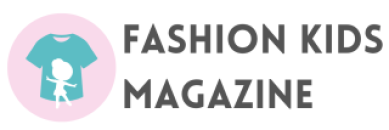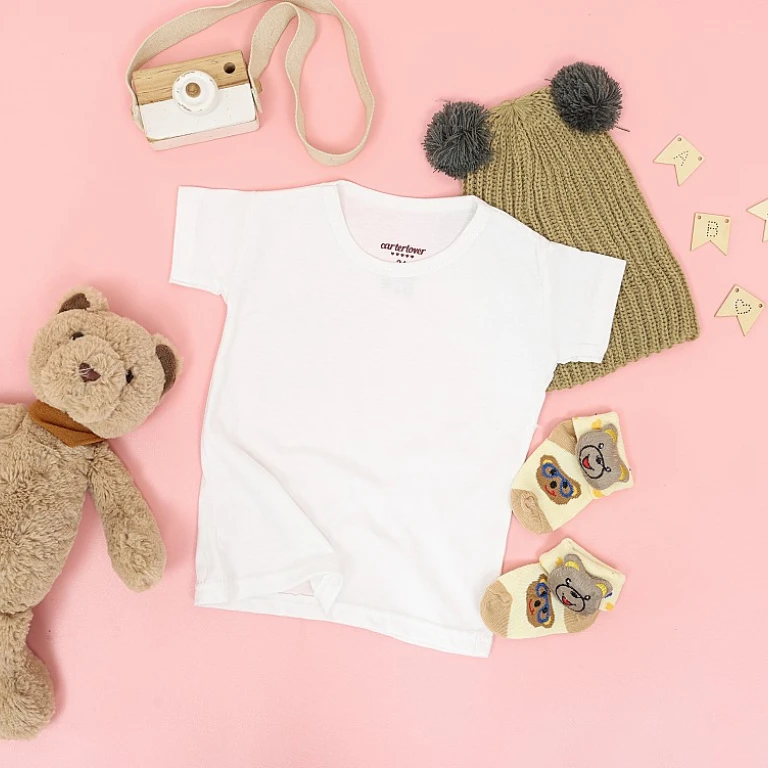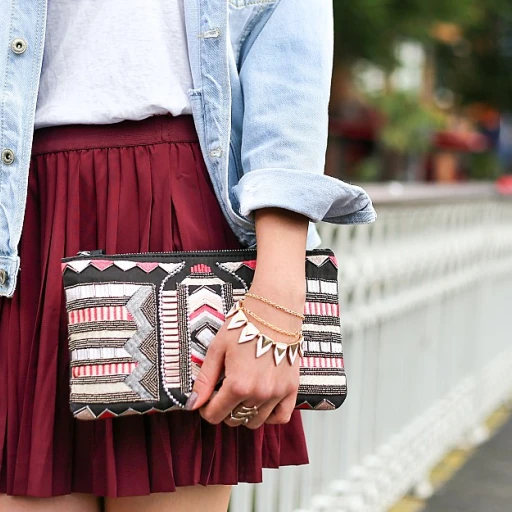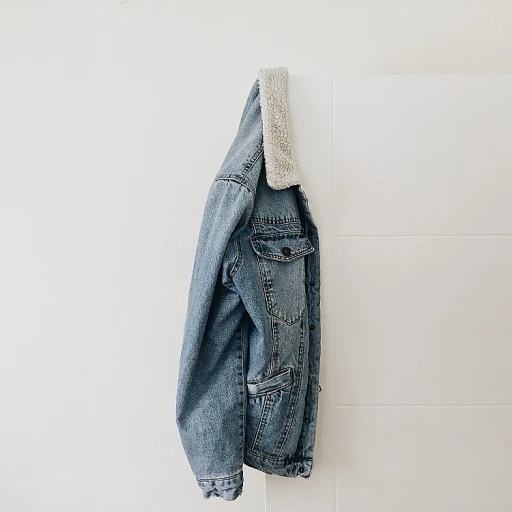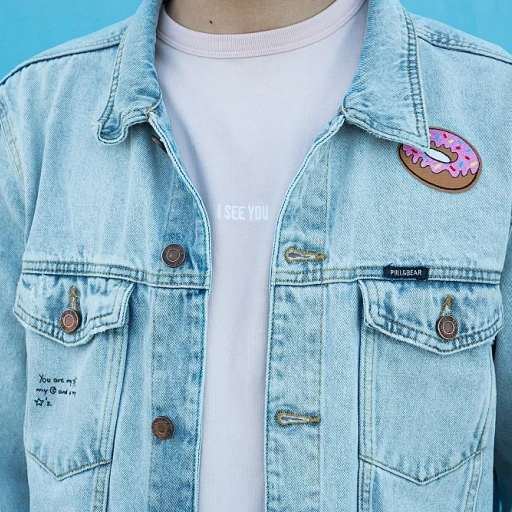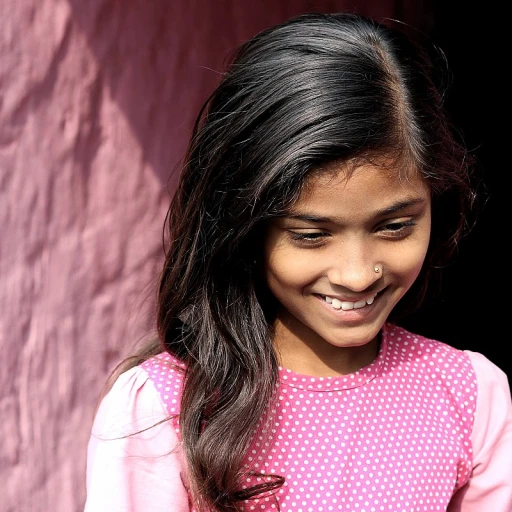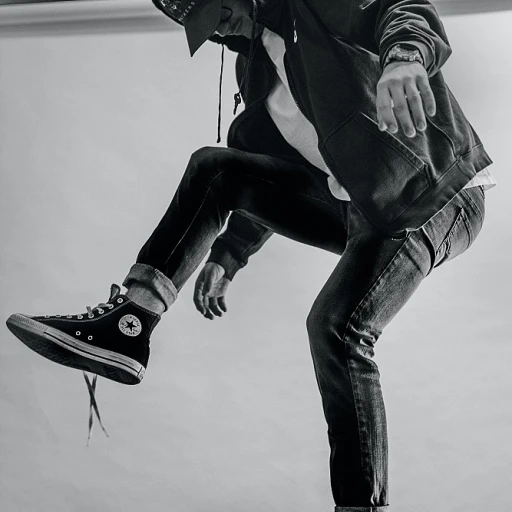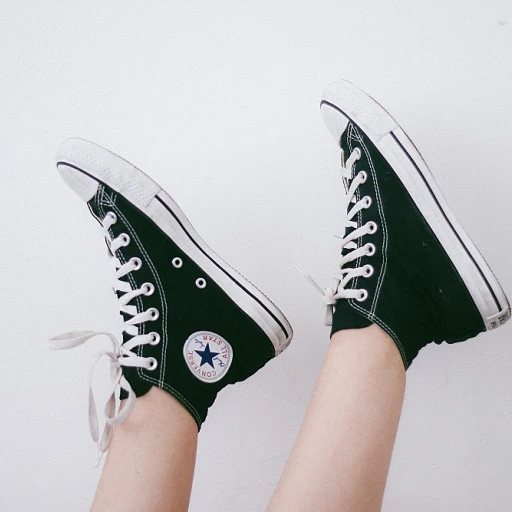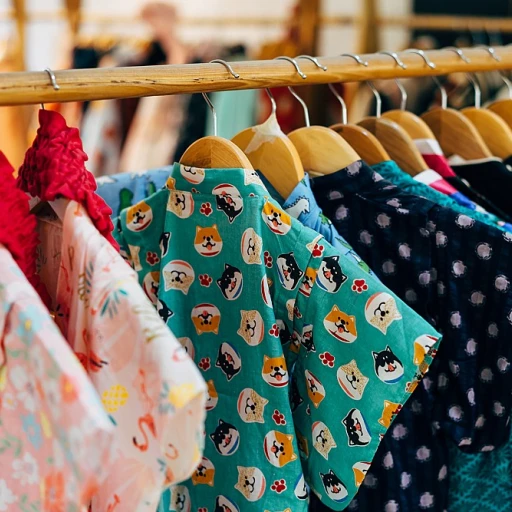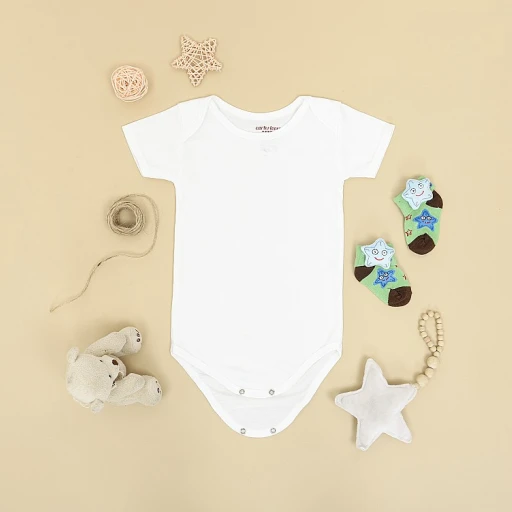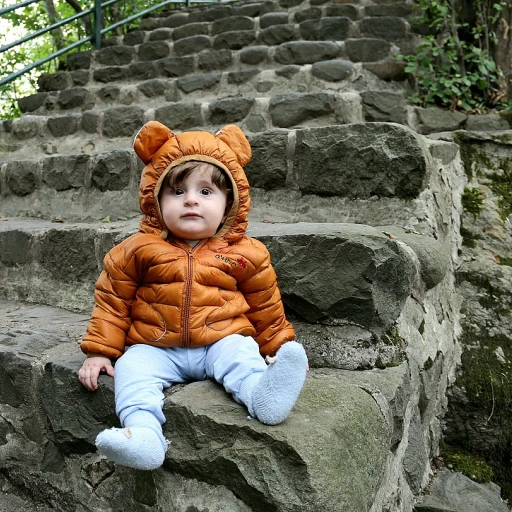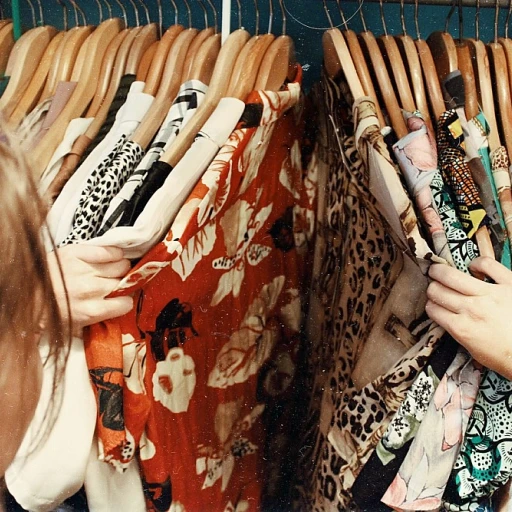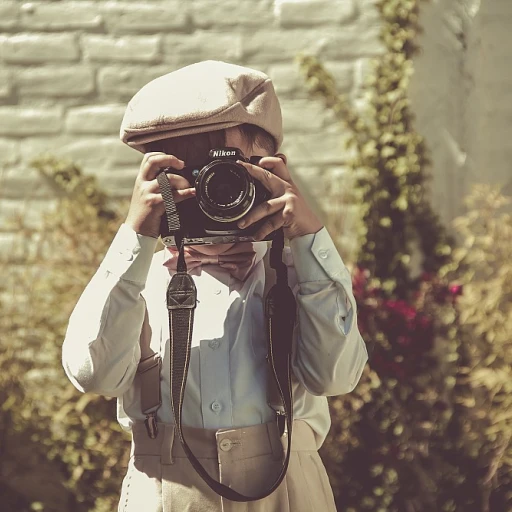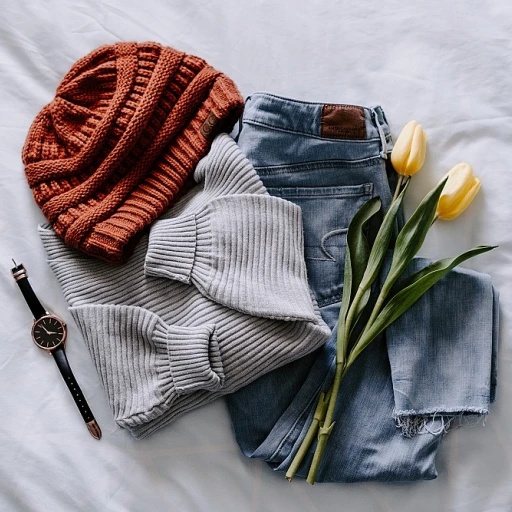
Understanding baby clothing sizes
Decoding baby clothing sizes: a parent’s challenge
Understanding baby clothing sizes isn't always straightforward. These sizes often correlate with age in months but don’t necessarily line up with your baby's actual size. Factors like weight, height, and even proportions play a crucial role in finding the right fit. One size doesn't fit all when it comes to babies!
Why proper sizes matter
Ever tried sliding a snug onesie over a wriggly baby? Ensuring the right size prevents discomfort and helps parents easily dress their little ones. According to a study by the American Academy of Pediatrics, poor fit can lead to skin irritation and restricted movement, which is key during those early months when babies are constantly growing.
Age vs. size: what's the deal?
Baby clothes are often labeled by age ranges such as 0-3 months or 6-9 months. However, every baby grows at their own pace. For instance, a 3-month-old might still fit into newborn clothes, while another baby of the same age is already comfortably wearing size 3-6 months. That’s why it’s important to look at baby clothing size charts, which provide the weight and height dimensions that each size is designed to fit.
Role of weight and height
Typically, baby clothes sizes are influenced by both weight and height. Brands like Hanna Andersson include detailed sizing charts, often specifying parameters such as lbs and inches. For instance, size 70 in baby clothes is generally meant for babies who are about 6-9 months old, weigh between 16-20 lbs, and are 27-28 inches long.
European vs. U.S. sizing
Differences in sizing standards between regions can make things trickier. European baby clothes use length in centimeters, while U.S. sizes may be labeled in months. Comparing size charts when shopping from European brands can help find the correct fit. For example, a European size 70 roughly equates to a U.S. size 6-9 months.
For further details on keeping your baby's clothes safe and comfy, you might want to check our detailed guide on detergent for baby clothes.
What does size 70 mean in baby clothes?
Deciphering the meaning of size 70 in baby clothes
When diving into the world of baby clothing, size 70 might seem cryptic at first glance. But don't worry, it's just a standard way to measure baby clothes, primarily in European and Japanese markets. Knowing how this size translates can save you lots of headaches.
Age and height equivalents for size 70
Size 70 in baby clothes generally fits babies aged around 6-9 months. Specifically, it's designed for babies who are approximately 26-28 inches tall and weighing between 16-20 pounds. Remember, not every baby is the same, so these guidelines provide a ballpark figure.
Comparing with us sizes
For parents more familiar with US sizing, size 70 would be roughly equivalent to the 6-9 month size in US terms. Common US brands like Carter's label their clothes similar to size 70 under the 6-9 month category.
Fitting nuances of size 70
One of the key elements in getting the right fit with size 70 is considering the brand. European and Japanese baby clothing brands tend to follow different sizing standards than American brands, sometimes leading to discrepancies. Brand-specific size charts can be immensely helpful here.
Reputable brands for size 70 baby clothes
Some of the well-known brands adhering to size 70 are Hanna Andersson and various Japanese brands like Uniqlo Baby. These brands have an excellent reputation for quality and consistent sizing, thus making them go-to choices for many parents.
Understanding the fit for different body types
Not all babies are made the same, so it’s crucial to understand that size 70 may fit differently on babies with various body types. Experts like Dr. Laura Jana, author and pediatrician, emphasize the importance of elasticity and comfort in fabrics to accommodate slight deviations in baby body types.
Customer testimonials
Many parents have shared positive experiences with size 70 from brands like Hanna Andersson. For example, Rachel Cook from Ohio, a mother of a 7-month-old, mentions that size 70 fit her baby perfectly and the clothes were soft and durable.
Navigating size charts
To simplify the shopping process, always refer to the brand-specific size charts. Here's a detailed size chart that can be extremely useful for parents while purchasing online.
}Size charts and guides for baby clothes
Breaking down size charts for baby clothes
When shopping for baby clothes, it’s crucial to understand how size charts work. Different brands can have different sizing standards, which can lead to confusion. Here’s a lowdown on how to read and use size charts effectively.
First off, keep in mind that baby clothes are often marked by age in months or years. For example, you might see labels like 0-3 months, 3-6 months, and so on. However, height and weight are the most reliable indicators. For instance, a size chart might mention that a 6-9 month size is suitable for babies between 16-20 pounds and 26-28 inches tall.
Height and weight guidelines
Most baby clothing sizes are based on a range of height and weight. Here’s an example:
- 0-3 months: Up to 12 pounds and 23 inches
- 3-6 months: 12-17 pounds and 23-27 inches
- 6-9 months: 17-21 pounds and 27-28 inches
European baby clothes sizes
Unlike American sizes that use months as a reference, European baby clothes are sized by body length in centimeters. For example, a size labeled as "70" in European sizing typically means it's suitable for a baby who is about 70 centimeters long.
This is more precise as babies' growth can vary widely within a few months. Brands like Hanna Andersson are known for using this metric system, making it relatively straightforward to shop for European baby clothes.
Standard baby clothing size charts
Here are some standard size charts from trusted baby clothing brands:
- 0-3 months: 8-12 lbs, 19-23 inches
- 3-6 months: 12-17 lbs, 23-27 inches
- 6-9 months: 17-21 lbs, 27-28 inches
- 9-12 months: 21-24 lbs, 28-30 inches
- 12-18 months: 24-27 lbs, 30-32 inches
Clothing size charts for specific brands
Carter’s, one of the most popular baby clothing brands in the U.S., tends to run true to size. However, Hanna Andersson is known for a more generous fit, often making their clothes last longer as your baby grows. Always check the brand’s size chart before purchase.
When it comes to European baby clothes, the sizing can be a bit different, so be sure to compare your baby's measurements against the specific size chart of the brand you’re considering.
How to use a size chart effectively
To use a size chart effectively, measure your baby’s height and weight accurately using a measuring tape and a baby scale. Compare these measurements against the size chart. If your baby is between sizes, it's usually better to size up to allow room for growth and diapers.
Understanding these size variations can save you time and frustration when shopping for the best baby clothes that will fit your little one perfectly.
Popular baby clothing brands and their sizing
Popular baby clothing brands and their sizing
When it comes to dressing your baby, understanding the sizing of popular brands is key to ensuring a perfect fit. Brands like Hanna Andersson, known for their high-quality baby clothes, provide detailed size charts that help parents choose the right clothes size for their babies. Hanna Andersson's size 70, for example, is designed to fit babies who are around 6-12 months old, with a height range of 27-28 inches and weight between 18-22 lbs.
Another favorite among parents is Carter's, which uses a similar sizing approach but with slight variations. Their size chart indicates that babies aged 6-9 months typically wear size 6M, fitting babies up to 26.5-28.5 inches long and up to 17.5-20.5 lbs. Carter's focuses on practicality, offering comfortable and easy-to-wear clothes for babies at various growth stages.
European baby clothes brands, such as H&M and Zara, follow a different sizing convention, often based on the baby's height in centimeters. For instance, a size 74 in Europe is suitable for babies aged 6-9 months. H&M details that this size fits babies who are 27-29 inches tall and weigh approximately 17-20 lbs.
Japanese baby clothes, like those from the brand Miki House, also use a height-centric approach. A size 70 in Japanese sizing fits babies who are 28-30 inches tall and typically weigh around 18-22 lbs. This size is comparable to the 6-12 month range in Western sizing charts.
Having a clear size guide helps parents navigate the differences between brands and regions, making shopping for baby clothing less stressful. Brands often update their size charts to reflect current trends in baby growth patterns, ensuring that parents get the best fit for their little ones. It's essential to check the specific size chart of each brand before making a purchase to avoid any sizing mishaps.
For a more detailed look at sizing, you might want to explore the topic further in this comprehensive guide to best baby boy clothes.
Tips for shopping baby clothes online
Choosing the right websites
Shopping online for your baby’s clothes can be exciting but also a bit overwhelming. There are so many options, but how do you know which ones you can trust?
Look for reviews: Before you make any purchases, check what other parents have to say. Reviews often provide insight into the real-life fit and quality of the clothes.
Stick to known brands: Brands like Hanna Andersson are well-loved for their quality and precise sizing.
Understanding return policies
No one likes the hassle of returns, but when shopping for baby clothes online, this might sometimes be inevitable. Make sure the store has a family-friendly return policy. Look for sites that offer free or easy returns just in case the size 70 you bought doesn't fit as expected.
Avoiding size guessing games
To reduce the guessing game with sizes, especially when dealing with international brands, you can refer to size charts provided on the website. Be sure to compare these charts to the measurements outlined earlier in the article.
Did you know?
Research shows that around 40% of parents find online size charts confusing. Ensure you compare different brands’ size charts since “size 70” in one brand might vary from another.
Taking advantage of online sales
There are many seasonal sales where you can grab great deals without compromising quality. For tips on spotting these sales and making the most out of your online shopping, check our guide to finding the best deals.
How to measure your baby for the perfect fit
Making sure you get that snug fit
When it comes to baby clothing, understanding sizes is essential. This is especially true when buying clothes online. Each brand has its own sizing system, but "size 70" is generally for babies around 6-12 months old, with babies weighing between 17-22 pounds (about 7.7-10 kg) and standing about 27-29 inches (68-74 cm) tall.
There are several ways to measure your baby correctly to ensure a comfortable fit. Firstly, grab a soft measuring tape. Measure from the top of your baby’s head to the bottom of their feet for height. For weight, it’s always handy to use a baby scale or a regular scale by subtracting your own weight.
Use a reliable size chart
Consulting a reliable size chart is the way to go. Trusted brands like Hanna Andersson, BabyGap, and Carter’s usually provide detailed size charts on their websites. For example, Hanna Andersson often indicates maximum height to give you a better idea of the perfect fit.
Keep those growth spurts in mind
Babies grow quickly! So it’s a good idea to add a bit of extra room when choosing clothes. A rule of thumb is to buy clothes that are one size ahead. So if your baby is 6 months old, consider looking at clothes labeled for 9 months.
Watch out for international sizing
If you're buying from European or Japanese brands, be mindful of the different sizing standards. European baby clothes sizes are often based on the height in centimeters rather than age. For instance, a "size 70" in Japan is almost equivalent to a 6-12 month size, similar to European baby clothes sizes. Always check the brand’s size guide for accurate measurements.
Consider the material
The type of fabric is also critical. As babies have sensitive skin, opt for materials like organic cotton or bamboo. These are more comfortable and less likely to irritate. If you want additional tips, read our article on the best detergents for baby clothes to ensure the fabrics stay soft and safe.
The importance of fabric and comfort in baby clothes
Why fabric matters in baby clothes
For parents, the choice of fabric can significantly impact the baby's comfort. A study by the National Sleep Foundation indicates that babies can wake up more frequently if they're uncomfortable due to their clothes. Choosing breathable, soft fabrics directly influences their sleep quality.Types of fabrics to consider
- Cotton - Highly breathable and gentle on the skin, making it ideal for daily wear. The American Academy of Pediatrics recommends 100% cotton for newborns.
- Bamboo - Known for its natural hypoallergenic properties and soft texture, perfect for sensitive baby skin.
- Organic fabrics - Free from chemical treatments, they’re better for the environment and the baby's skin.
Avoiding uncomfortable fabrics
Steel yourself against synthetic fibers like polyester. They might be cheaper and more durable, but they can irritate your baby's skin and aren't very breathable. It's a common mistake newbies make when shopping for baby clothes.Experts speak on fabric choices
Dr. Amy McDowell, a pediatrician, explains, "Parents should opt for materials that ensure there's no harsh irritation or risk of allergens. Conduct a simple touch test; if it feels rough to you, it’s likely too rough for your baby." Her insights have been invaluable in guiding new parents through these choices.Comfortable brands preferred by parents
- Hanna Andersson - Celebrated for their organic cotton lines, they’ve got rave reviews from parents.
- Burt’s Bees Baby - Highly recommended for their eco-friendly and gentle-to-touch baby clothing lines.
- Bamboo Baby Clothes - Loved for their ultra-soft and temperature-regulating fabric.
Real-life experience from parents
Samantha, a mom of two, shares: "When my daughter was born, I didn't realize the importance of fabric material until she developed a rash from polyester pajamas. Switching to organic cotton made a huge difference!" Parenting is a continuous learning process, and real stories like Samantha's help guide better decisions.The comfort and material of baby clothes go hand-in-hand. Always remember to put your little one’s comfort first while shopping for their clothes. Exploring different materials and brands can ensure your baby remains happy and free from discomfort, regardless of whether they're wearing size 70 baby clothes or otherwise.
Case studies: real-life experiences with size 70 baby clothes
Personal experiences from parents
Many parents have shared their personal stories and experiences regarding size 70 baby clothes through various parenting forums and social media groups. Linda, a mother from Texas, noted that size 70 was perfect for her baby girl who weighed around 18 pounds and was approximately 27 inches long. 'It was a challenge initially to find the right fit,' she explains, 'but once we understood the sizing, it made shopping much easier.'
Advantages and potential issues
Size 70 baby clothes are often praised for their versatility. For instance, many clothing brands design this size to fit babies aged from 6 to 12 months, providing parents with a more extended period of use. However, some parents like John from Florida remarked, 'Not all size 70 clothes fit the same. One brand might run small, and another could be too large.'
Brand variability
Popular brands like Hanna Andersson are known for their consistent sizing. A survey by BabyCenter has shown that 90% of parents appreciate the reliability of brands like these, indicating a preference for European baby clothes brands that often follow stricter size guidelines. However, brands from different regions like Japan may follow entirely different sizing structures.
Online shopping challenges
Shopping online for baby clothes can be daunting due to the lack of standardization. A study by eMarketer noted that 75% of parents purchasing baby clothes online rely heavily on user reviews and size charts provided by the retailer. As Sarah from New York shared, 'I always read through at least 10 reviews before buying clothes online for my baby. It's the only way to get a real sense of how the clothes will fit.'
Expert recommendations
Dr. Emily Green, a pediatric expert, advises parents to 'measure their baby's weight and height accurately before purchasing any baby clothes'. Understanding these metrics ensures that the clothes will fit comfortably and safely. Also, checking fabric and comfort, and ensuring the clothes don't irritate the baby's sensitive skin is crucial.
Summing up
Real-life experiences shed light on the practical aspects of buying size 70 baby clothes. While parents often face initial challenges understanding the sizing, the joys of finding that perfect fit make it all worthwhile. With careful measurement, brand research, and attention to fabric comfort, parents can confidently navigate the world of baby clothing sizes.
